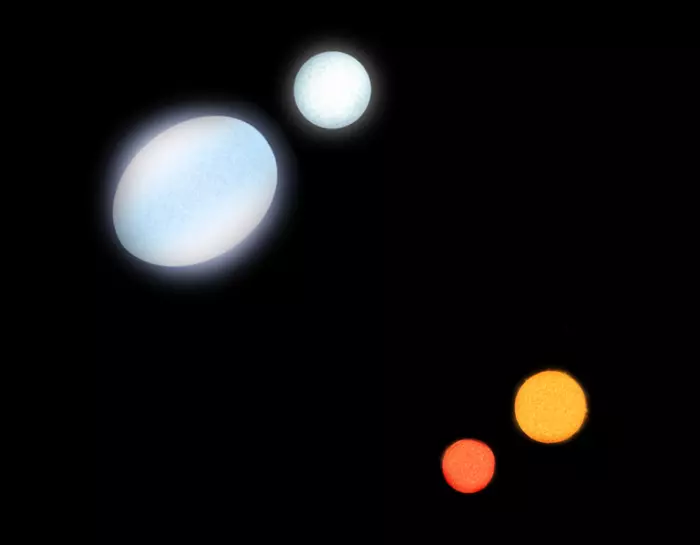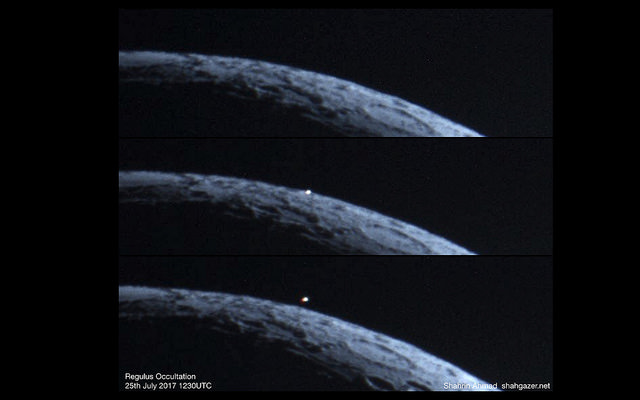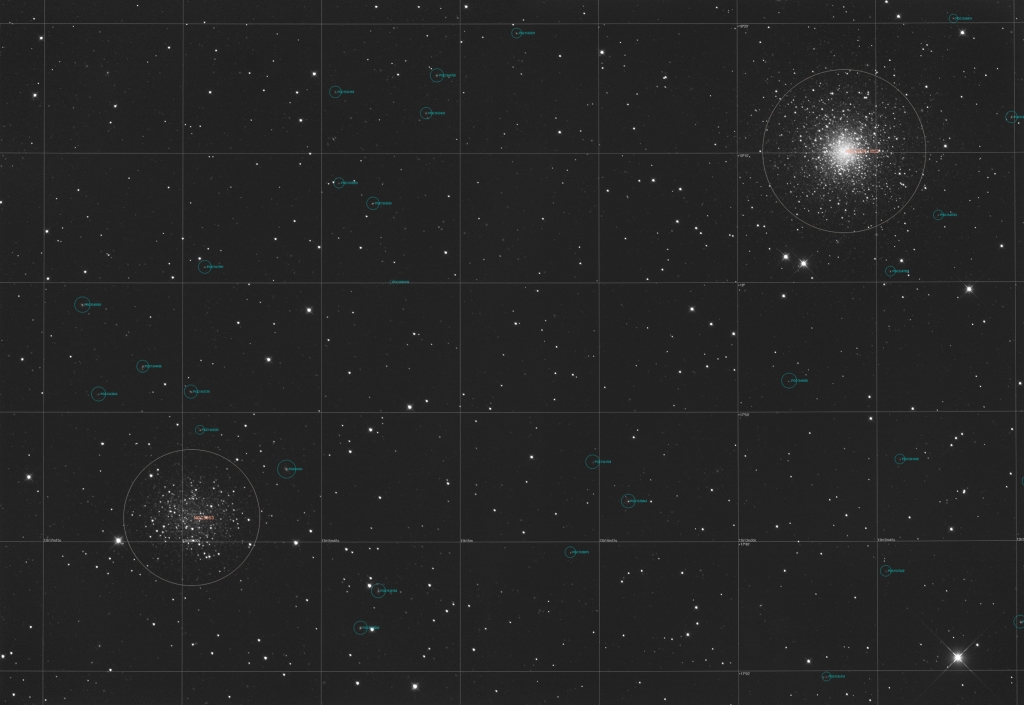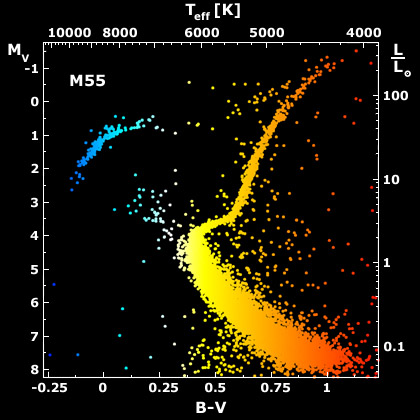Wow, that's some spectacular info about tiny dwarf galaxy Leo I!

But first, let's consider foreground star Regulus:
Regulus and the Dwarf Galaxy
Image Credit & Copyright: Markus Horn
Regulus is the closest of all B-type stars at 79 light-years from the Earth. It is a four-star system, whose dominant member - Regulus A - is spectral class B8IV. Regulus A has just exhausted its core hydrogen and is about to leave the main sequence. It is still blue, at a surface temperature of about 11,700 K, almost exactly twice that of the Sun, with a mass of 3.8 solar and a luminosity of ~316 times solar. Regulus A is rotating at a breakneck pace, and according to
Wikipedia, its equatorial surfaces rotates at about 320 kilometers per second (199 miles per second), which is 96.5% of its critical angular velocity for break-up!!! I mean!!!

Because of its extremely rapid spin, Regulus A is a highly flattened star. This is what the four-star system looks like (sizes and distances are not to scale):
The orange and red stars in the illustration are small cool faint main sequence stars of spectral classes K and M, whereas the closest companion to Regulus A is believed to be a white dwarf. But if that is the case, then the Regulus system would be at least a billion years old, according to
Wikipedia, just to account for the formation of the white dwarf.
Small objection from the Color Commentator: Have the Wikipedia people heard about Sirius and its white dwarf companion? Is Sirius also a billion years old?
Anyway. If Regulus A is a billion years old, then it can't have been born with its current mass, 3.8 solar masses, because stars that massive don't remain on the main sequence for that long. So it must have gained mass during its main sequence lifetime, probably from its now-white dwarf companion. In other words, if the closest companion of Regulus A is a white dwarf, then Regulus A must be a blue straggler and a post-Algol star.
One last note about Regulus: It lies only 0.465 degrees from the ecliptic, and it is regularly occulted by the Moon!
Okay! Now let's start talking about Leo I. It's a tiny, puny galaxy, whose mass is only about (2.0 ± 1.0) × 10
7 M
☉, according to
Wikipedia. Is that a lot? Heck no, gimme five Omega Centauris and you've got the mass of Leo I!
The Milky Way with Omega Centauri by Gaia. Credit: ESA.
But in spite of its puny size, Leo I may have a central black hole comparable in mass to the central black hole of the Milky Way, Sgr A*! The mass of Sgr A* is some 4.3 million times the Sun, and the black hole of tiny little Leo I may be some 3 million times the Sun!! That's ridiculous!



According to
Fabio Paccuci et al., Leo I, which is one of the most distant satellites of the Milky Way, may have lost up to 90% of its mass after passing close to the Milky Way twice. We must assume that Leo I is on an elongated orbit. Of course, the mass lost by Leo I would not affect the mass of its black hole.
If Leo I has lost so much mass during its passages of the Milky Way, it must have left behind an observable stellar stream:
But according to Fabio Paccuci et al., we may be viewing the Leo I stellar stream end on, so that it is very hard to see it. The Gaia telescope may reveal the stream to us, they hope.
Well, wow!!! I'm just saying!!! I'm still flabbergasted!
Ann
 Regulus and the Dwarf Galaxy
Regulus and the Dwarf Galaxy








